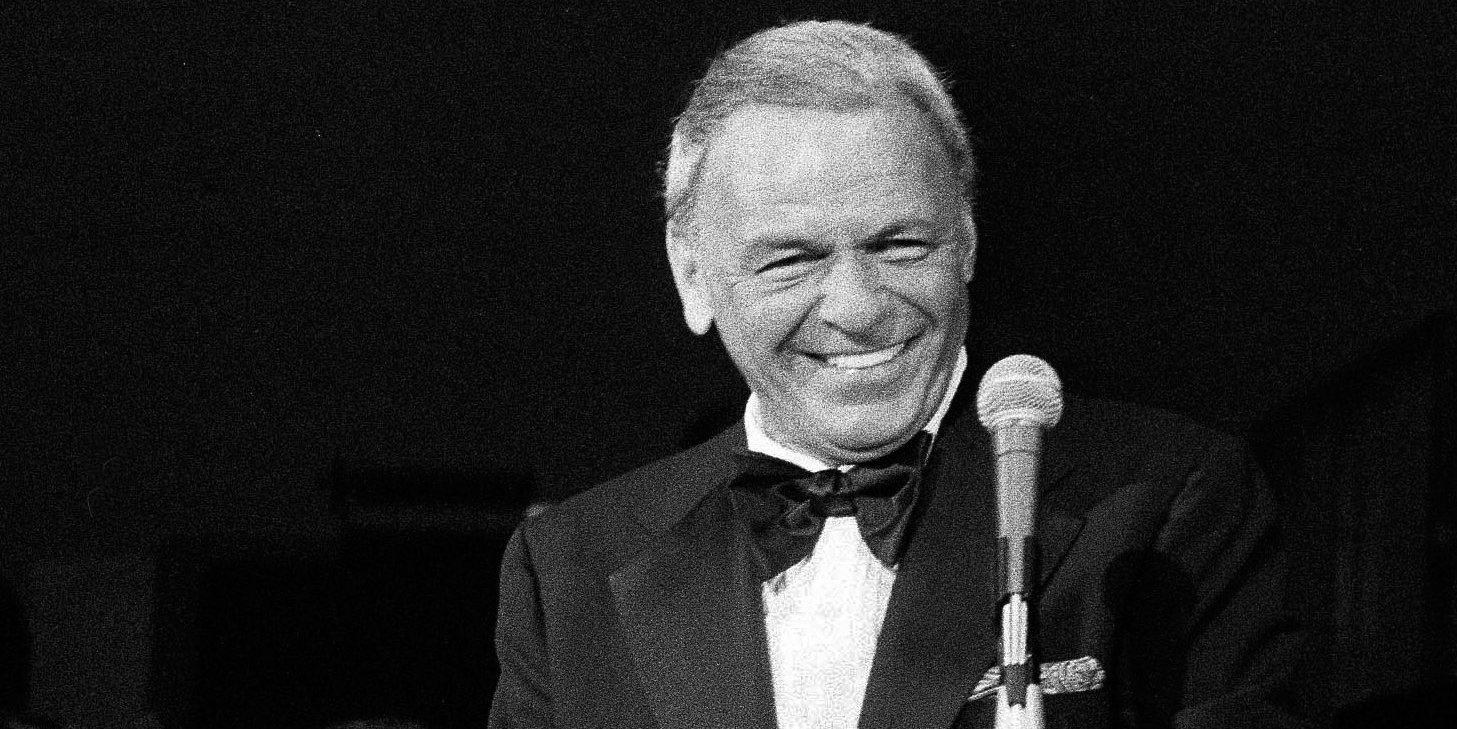Singer, Actor, Icon: Celebrating 100 Years Of Frank Sinatra

It’s the 100th anniversary of Frank Sinatra’s birth this Saturday.
Ray Stubblebine / associated press file
He’s an Academy Award winner. He was married to the most beautiful woman in Hollywood. He was associated with the Mafia. His friends included some of the most influential entertainers of his time, and most importantly, his voice is an American brand.
“In the year 2015, people are still listening to Frank Sinatra’s songs, they’re still talking about Frank, making commercials in which his voice carries the day … He’s achieved a certain kind of American immortality,” said anthologist and poet David Lehman in an interview with Lois Reitzes.
Lehman recently wrote “Sinatra’s Century: One Hundred Notes on the Man and His World” in celebration of Sinatra’s 100th birthday this Saturday.
The book explores the many facets of Sinatra.
Sinatra was born in Hoboken, New Jersey, on Dec. 12, 1915, and eventually became one of the best-selling artists of the 20th century, if not the most well-known. He sang a myriad of top-charting pop songs, including “Come Fly with Me,” “All of Nothing at All,” “I’ve Got You Under My Skin,” and “My Way.”
Unlike many of the crooners of Sinatra’s early years in show business, he did not try to mimic Bing Crosby, the bass-baritone who shares a similar place in American singing history. Sinatra’s voice was revered for its range and endurance. He could hold notes for an incredibly long period of time.
“He has arguably the best vocal equipment of any male singer of his time and adds to that a style that is original,” said Lehman.
Even through fame and fortune, however, Sinatra remained a boy from New Jersey.
“When he sings, it’s the voice of an angel. It’s beautifully trained voice which is capable extraordinary softness and the most extraordinary leap of an octave or an octave and a half,” said Lehman. “And then when he talks, he sounds like Hoboken.”
Sinatra was notoriously good with women. He married four times, and his affairs with fellow stars and entertainers, including Lauren Bacall and Angie Dickinson, were well-publicized. There was, however, one woman who stood out as the great love. It was a love that infected Sinatra’s music and inspired his melancholy album “In the Wee Small Hours.”
“The great love was Eva Gardner,” said Lehman. “And for her, he was willing to look like a sap.”
Along with affairs and marriages with notable women, Sinatra was the leader of the hottest friend group of his time. The Rat Pack was originally under the leadership of Humphrey Bogart, but when the actor passed away in 1957, Sinatra took up as group leader. Along with traveling together and getting into tomfoolery, Rat Pack members Dean Martin, Sammy Davis Jr., Peter Lawford, Sinatra and other satellite stars would perform and do movies together.
“Sinatra loved the idea of a group of millionaires would just have fun,” said Lehman.
As an activist, Sinatra promoted black and Jewish performers and songwriters, but on the shadier side of society, he was rumored to be linked to the Mafia.
Lehman, though, said that it was normal for entertainers to associate with gangsters.
“In the 1920s, we had Prohibition, as a result, everyone in the country was breaking the law when they had a drink,” said Lehman. “If you met at a speakeasy, you were collectively breaking the law. Speakeasys by definition were controlled by mobsters, criminals.”
When Prohibition ended, the nightclubs remained owned by gangsters, and that is where entertainers performed and made their breaks. So singers and entertainers developed relationship with these shady characters. “It was part of the turf,” said Lehman.
Johnny Fontane in “The Godfather” was rumored to be based on Sinatra. It was also rumored that proud Italian-American Sinatra got his role in “From Here to Eternity,” for which he won an Academy Award, because of mob threats. Of course, it’s all speculative.
Sinatra died in 1998. Lehman said that his 100-section book, “Sinatra’s Century,” does not just tell the story of a singer but also the story of the United States.
“The idea of writing 100 sections of a book to celebrate the 100th anniversary of his birth makes an obvious kind of sense, and it’s a double sense when you consider that the century could be called the American Century. His life is an allegory,” said Lehman.





